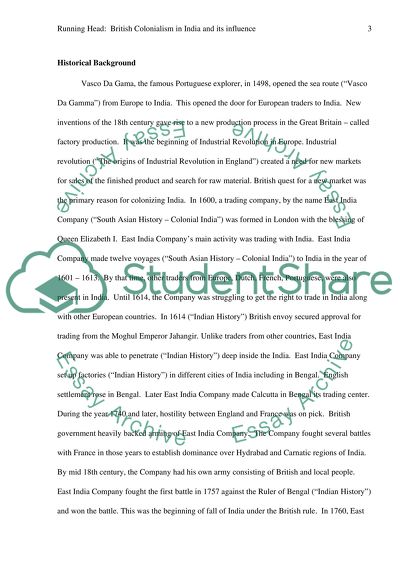Describe major aspects of British colonialism in India and its Essay. Retrieved from https://studentshare.org/history/1597523-describe-major-aspects-of-british-colonialism-in-india-and-its-influence-on-the-indian-population
Describe Major Aspects of British Colonialism in India and Its Essay. https://studentshare.org/history/1597523-describe-major-aspects-of-british-colonialism-in-india-and-its-influence-on-the-indian-population.


